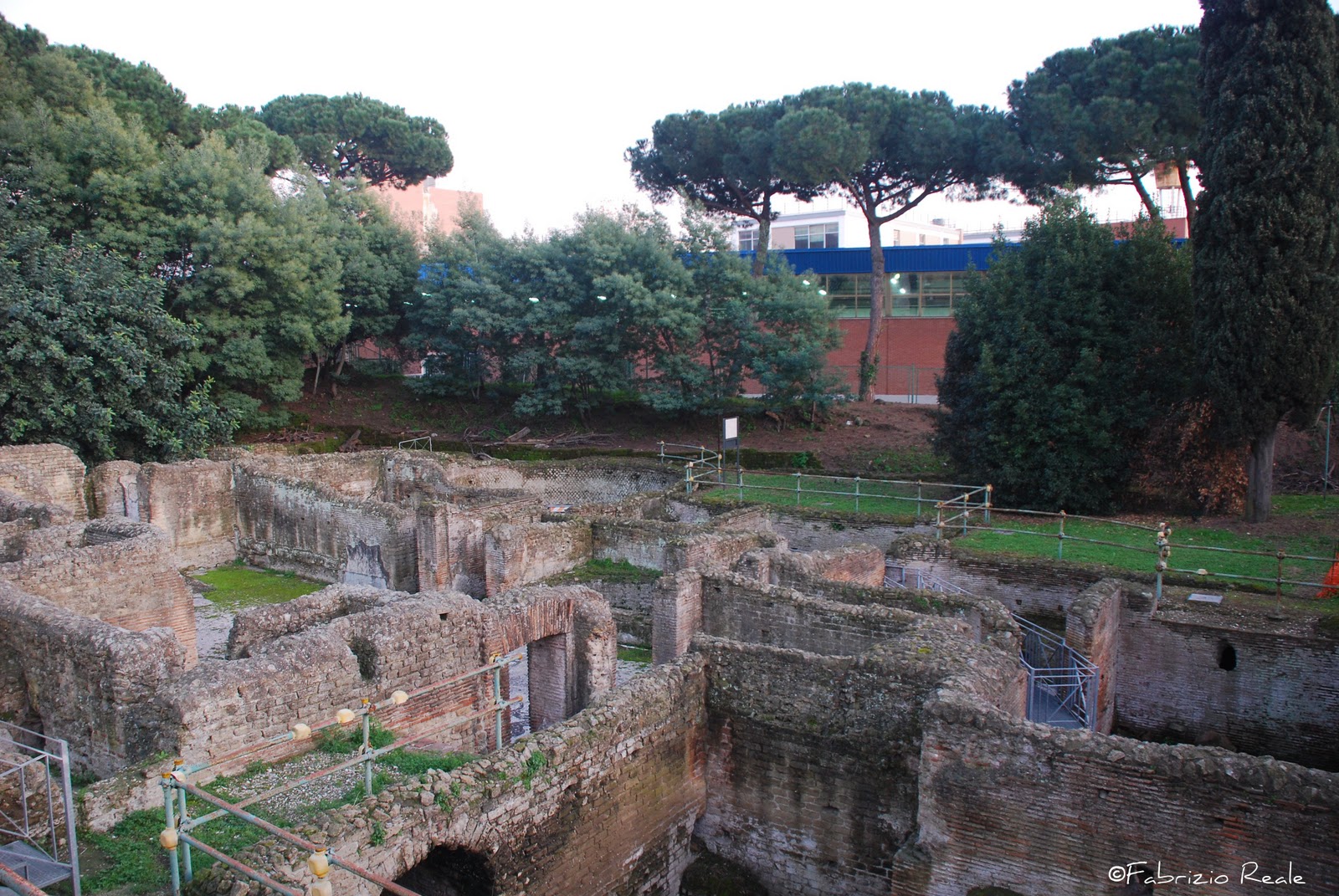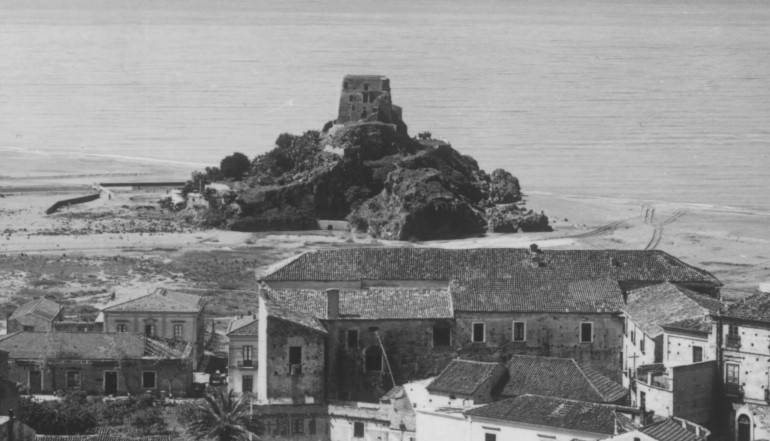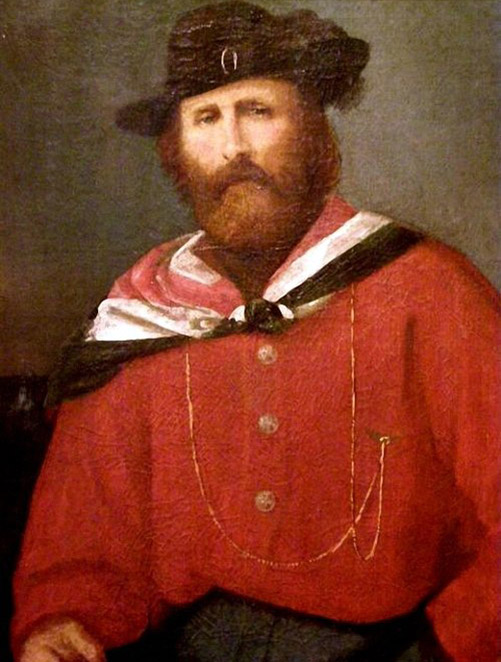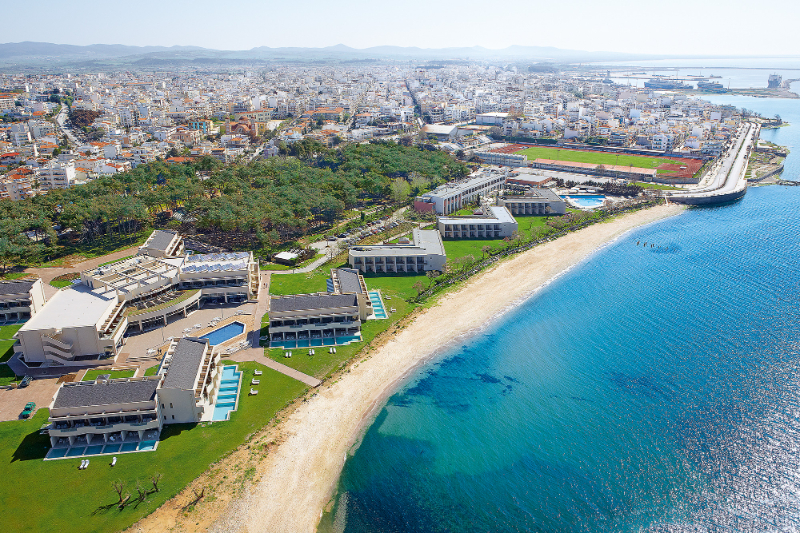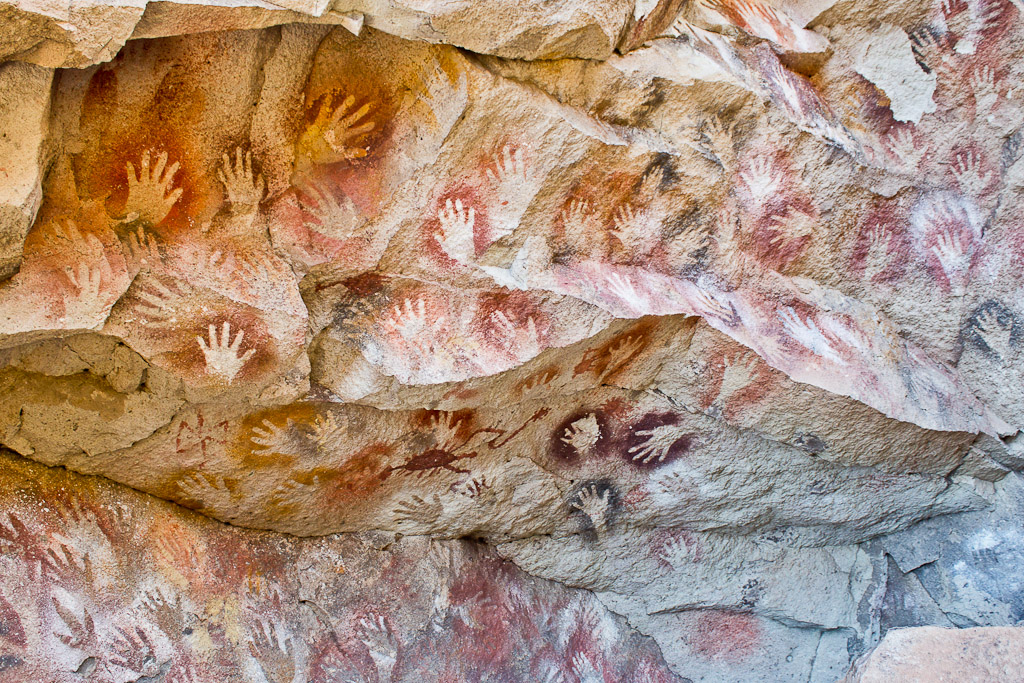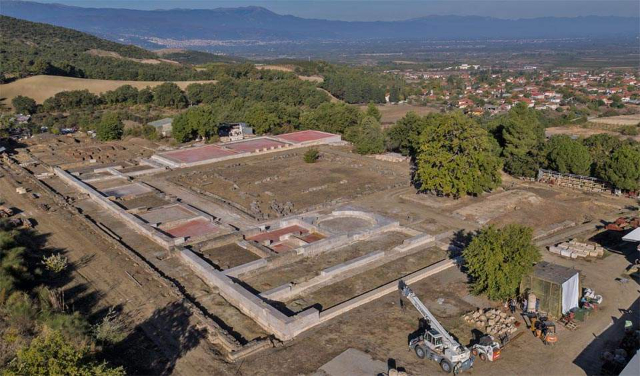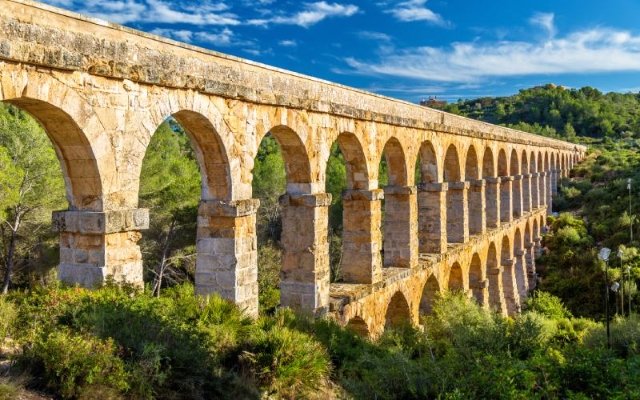The spa complex of Via Terracina, brought to light in 1939 during the construction of the Mostra d’Oltremare, is located at the intersection of the ancient Via Puteolis-Neapolis and a secondary road. The building, articulated on several levels, fed by the Serino aqueduct and built mainly in opus vittatum and latericium, dates back in its original layout to the first half of the 2nd century A.D.; but over time it underwent many interventions that modified the organization of the spaces. Certainly later than the original nucleus are: the entrance corridor, in medieval times adapted to a cistern, some rooms perhaps identifiable as tabernae, and the latrine. The latter, preceded by a small hallway with a barrel vault and the remains of the ablution basin, was to have been covered by a semi-dome and had wall paintings, of which only a few traces remain today. The decoration of the floor is also poorly preserved, consisting of a mosaic of black and white tiles depicting two swimming dolphins and a fantastic sea animal. Lighting was provided by the five windows that opened in the semicircular wall. Along the perimeter of the hemicycle runs the water drainage channel, continuously supplied by the cistern through underground ducts, above which were the perforated stone or marble seats. Originally, the entrance to the spa building opened directly onto the vestibule, where the black and white mosaic depicting a Nereid seated on the tail of a young triton, surrounded by two cupids and dolphins, as well as traces of the skirting and the marble slab wall covering is preserved. A dressing room (apodyterion) was a room, which initially communicated with the vestibule through a walled entrance at a later stage. There were different routes that users could choose according to their preferences or therapeutic needs. The main one provided for various stops in four rooms heated to various temperatures, then the stay in the apsidal calidarium, with labrum for ablutions and the bathtub (alveus) for the hot bath, and finally the access through a passage room to the frigidarium with two tubs for cold baths and a floor mosaic with black figures on a white background depicting fantastic animals, ridden or followed by anthropomorphic figures and dolphins in the corners. The partial collapse of the floors and the fall of the wall coverings have laid bare the structural elements connected with the production of heat – the side ovens (praefurnia) with service compartments – and its diffusion – the cavities under the floors (hypocausta and suspensurae) and along the walls. These rooms, according to the scheme known by Vitruvius, are oriented south-west, so as to better exploit the heat and sunlight during the afternoon hours.
